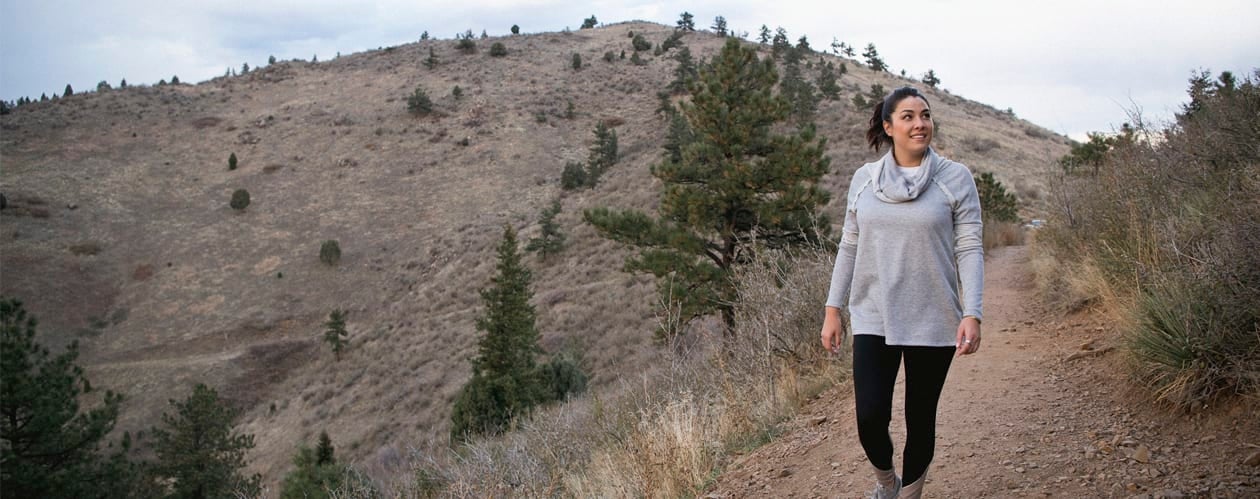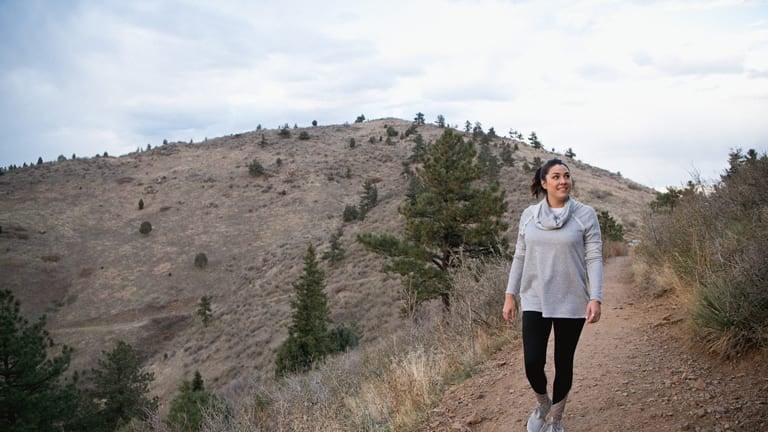Walk to weight loss and better health


Walk your way to better health
From swimming laps and working out in the gym to playing team sports and doing Pilates at home, there are hundreds of ways to exercise. However, walking remains one of the easiest, most accessible and most affordable workouts there are.
So why the popularity? “Walking doesn’t require any specialised equipment and can be performed anytime, anywhere,” says exercise physiologist Chris Fry from Healthkicks in Cairns. “Walking is also one of the few forms of physical activity that can be easily implemented into most exercise routines, regardless of your age, gender or exercise history.”
Perth-based exercise physiologist Fiona Ryan, from the sports medicine facility Sportreat, agrees that walking has a number of major advantages. “Because it’s low impact on your musculoskeletal system and creates less loading on the joints, there’s much less risk of injury. At the same time, you can vary the intensity of walking from low to moderate, so it’s a suitable option for every level of fitness,” she adds.
Read on for surprisingly simple ways to upgrade your walking workout – and achieve the body you want, now!
The health and fitness benefits
The fantastic thing about walking? Even though it’s one of the easiest kinds of exercise out there, research proves that it’s a great way to boost your health and help those scales move in the right direction. Here’s why it works:
1. It boosts general wellbeing
“Any form of aerobic exercise has extremely beneficial effects on many chronic-disease risk factors, including blood pressure and cholesterol levels,” says Fry. “And the benefit of walking is that it provides all of these health benefits with minimal adverse effects.”
2. It extends your lifespan
According to research from the University of Pittsburgh, the faster you can walk, the better. Researchers found that people who can still cover at least 3.6km in an hour during a walk when they reach the age of 65 significantly increase their chances of living a long, healthy, disease-free life, compared to those people who walk more slowly.
3. It helps fight memory loss
Strange, but true! Another study from the University of Pittsburgh discovered that walking at least 9.5km a week can protect brain size and, as a result, helps to preserve memory function.
4. It reduces the risk of macular degeneration
That’s according to research from the University of Wisconsin, which found that, when combined with a healthy diet and not smoking, regular walking can help reduce the risk of age-related macular degeneration – a leading cause of blindness – by as much as 71 per cent.
Tips and tricks
There are plenty of gadgets designed to help you get the most out of your walking workout. Why not try an activity tracker? A study by Stanford University School of Medicine found that wearing a pedometer encourages people to take an extra 2100 steps a day. “They are a cheap and effective method for gauging your fitness progress,” explains Fry.
Fancy a more-high tech version? Invest in a Fitbit or a Jawbone that automatically tracks activity and syncs all the important info to your phone or tablet, as well as the WW app.
BUY: Our Fit Pedometer
Walking dos and don’ts
Try these handy dos and don’ts to maximise the health and body benefits of your walking workout.
Do… Aim to focus your gaze on the horizon out in front of you or, alternatively, on an object 10 or more metres ahead of you, recommends Fry. This will encourage you to maintain a naturally relaxed and healthy neck position.
Do… Remember to keep your bellybutton tightened or tucked in while you walk. “This helps to ensure a degree of control over core abdominal muscles, which helps to minimise any spinal compression that walking might create,” says Fry.
Do… Concentrate on your backside. “Focus on tightening your gluteal (bottom) muscles when each foot touches the ground after a stride for stronger, more toned muscles,” suggests Fry.
Don’t… Overstride. “A really common beginner’s mistake is lengthening your stride in order to walk faster,” cautions Ryan. “Overstriding is actually biomechanically inefficient and can slow you down. It can even cause an injury, so instead of over-striding to increase your pace, think about concentrating on a powerful push-off that allows the foot to land closer to the body.”
Don’t… Tense your upper body. “When you walk, the muscles in your hands and arms should stay relaxed, rather than tightened, to avoid muscle soreness and neck or back tension,” Ryan adds.
Your seven-day walking plan
With the right mix, it’s easy to create a weekly exercise program just through walking.
| Day | Workout |
| Monday | Short walk - Walk for 15 to 30 minutes, depending on your fitness, at a moderate pace (think 100 steps per minute), so that it’s possible to talk but not sing. Stay on level surfaces at first to ease your body into the motion. |
| Tuesday | Intervals - Walk for 30 to 40 minutes at a low or moderate pace, incorporating one-minute bursts of your maximum speed after every four minutes. By the end, you should have notched up at least seven speedy intervals. |
| Wednesday | Long walk - Walk for 45 to 60 minutes at a low or moderate pace. Keep your interest levels high by changing the scenery – walk through a park, the woods or around a lake. |
| Thursday | Short walk - Walk for 15 to 30 minutes at a moderate pace. If you’re short on time, squeeze in your walk by getting off the bus or train one stop earlier on the way home, or by walking during your lunch break. |
| Friday | Intervals - Walk for 30 to 40 minutes, alternating two-minute bursts at your maximum pace, with two minutes at a low or moderate pace. Struggling with the intensity? Don’t be afraid to slow down, catch your breath for a minute or two, then start again when you’re feeling more comfortable. |
| Saturday | Long walk - Walk for 45 to 60 minutes at a low or moderate pace and use this time to unwind from the week. Even walking around the local shopping centre counts as incidental exercise – just try not to get too distracted by the shop windows! |
| Sunday | Free choice – Have a day off or choose somewhere scenic to walk for as long or as little as you like. Enjoy your surroundings or the company of a friend, dog or your family. |